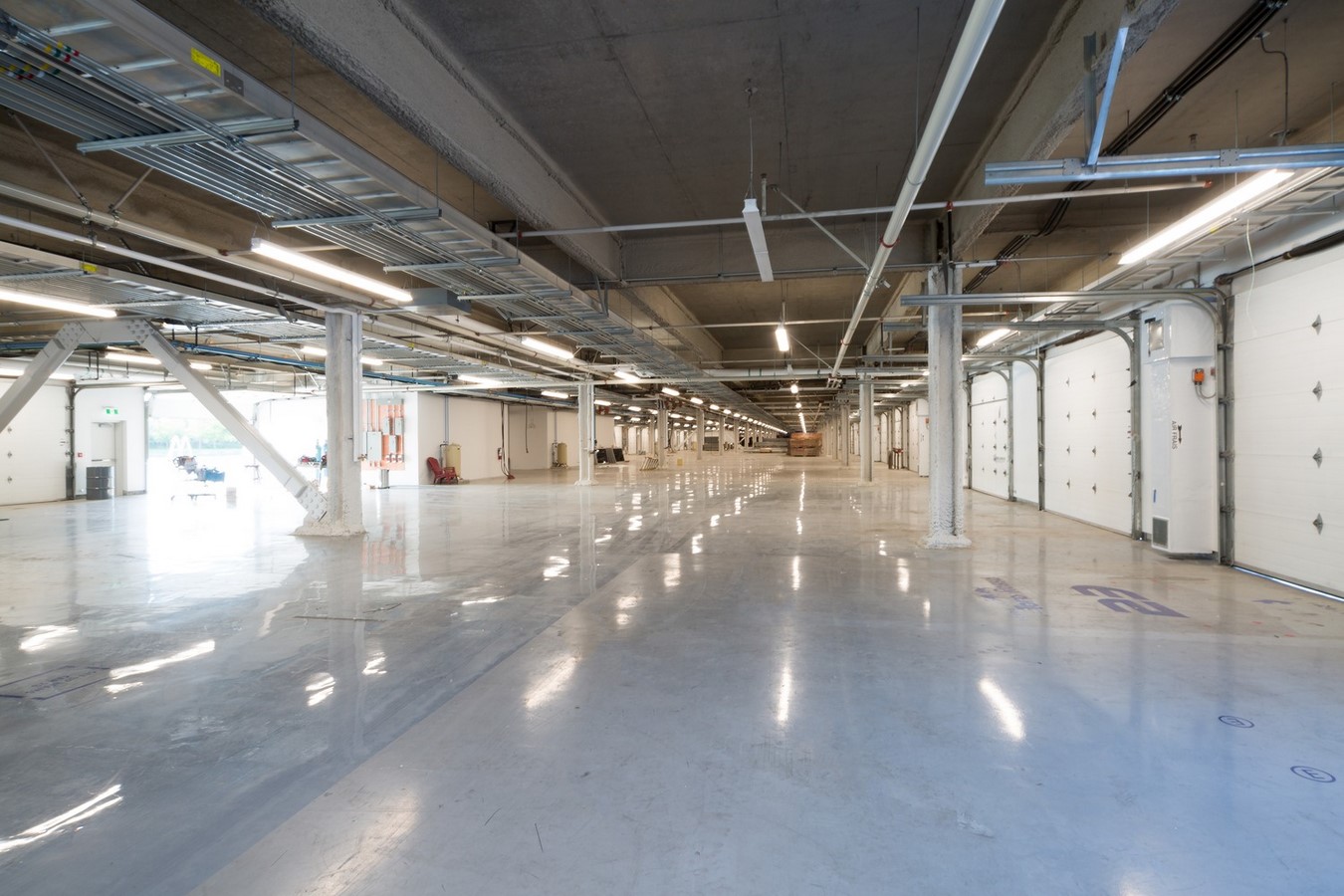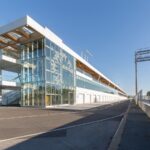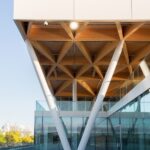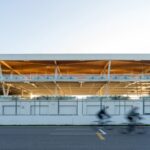The city of Montreal embarked on a mission to enhance the Formula 1 Canadian Grand Prix experience by replacing existing temporary structures with a larger permanent building. This new facility, designed by FABG, was meticulously crafted to meet the diverse needs of the event, including team garages, administrative offices, lounges, and media centers.

Innovative Design and Construction
To expedite the $50 million project within the ten-month window between Grand Prix editions, the building was conceived as an assembly of prefabricated components. These included concrete panels, steel beams, CLT wooden beams and panels, curtain walls, and removable partitions. Notably, the design allowed for easy disassembly and material recycling, ensuring sustainability in case of termination.

Minimalist Approach with a Cultural Touch
In a departure from conventional luxury, the building’s design sought to reflect Montreal’s identity and values while accommodating over 300 million global viewers. Drawing inspiration from Quebec’s innovative history, particularly the 1967 World’s Fair held on Île Notre-Dame, the wooden roof structure was geometrically derived from this iconic event. This departure from traditional racing aesthetics aligns with the circuit’s new vision to emphasize cultural and geographical uniqueness.

Functional Layout and Accessibility
The new paddocks boast 13 stables, designed to adapt to evolving team needs with modular garage spaces. The interior configuration caters to seamless stakeholder interaction, with revamped spaces for sports commentators and FIA representatives. Additionally, universal accessibility was prioritized, with the ground floor and facilities designed to ensure easy access for all visitors.

Commitment to Sustainability
A key focus of the project was sustainability, with the roof structure primarily composed of wood—a durable and renewable material. The use of wood not only reduces carbon emissions but also sequesters CO2 from the atmosphere, making it carbon negative. Furthermore, solar photovoltaic panels on the terrace harness solar energy to offset energy consumption during the Grand Prix, promoting environmental responsibility.
Local Sourcing and Production
Emphasizing local production, materials were sourced from Quebec, supporting regional industries and minimizing environmental impact. Precast concrete, steel, and wood components were locally manufactured, allowing for efficient production and rapid assembly despite challenging winter conditions.


In conclusion, the Canada F1 Grand Prix New Paddock stands as a testament to innovative design, sustainable construction, and cultural significance, elevating the Formula 1 experience while embodying Montreal’s values and identity.


















Leave a Reply